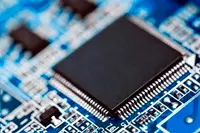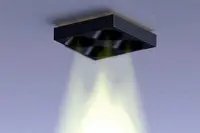Electronics News
Archive : 23 September 2015 год
 A £2million funding competition is being launched by Innovate UK and the Centre for Digital Enterprise on behalf of MI5, MI6 and the Government Communications Headquarters, to identify innovative technologies or approaches to meet the security challenges created by the IoT.
A £2million funding competition is being launched by Innovate UK and the Centre for Digital Enterprise on behalf of MI5, MI6 and the Government Communications Headquarters, to identify innovative technologies or approaches to meet the security challenges created by the IoT.
The IoT is a ‘sensor-rich’ environment where these sensors communicate in ad-hoc, local and mesh networks, operate using different protocols and standards and use encryption to protect communications.
The aims of the competition are to work out how to pull together and visualise data on subjects of interest from this diverse, loosely connected environment and how to be sure of a hypothesis that two events, users or devices are connected, based on the data gathered.
Author
Tom Austin-Morgan
Source: www.newelectronics.co.uk
 Synopsys, Inc. has announced a portfolio of IP optimised to address the security, wireless connectivity, energy efficient and sensor processing requirements for a range of IoT applications such as wearables, smart appliances, metering and wireless sensor networks.
Synopsys, Inc. has announced a portfolio of IP optimised to address the security, wireless connectivity, energy efficient and sensor processing requirements for a range of IoT applications such as wearables, smart appliances, metering and wireless sensor networks.
The DesignWare IP portfolio for the IoT includes power and area efficient logic libraries, memory compilers, non volatile memory, data converters, wired and wireless interface IP, security IP, ultra low power processor cores and an integrated sensor and control IP subsystem.
Synopsys provides a suite of commercial and open source tools and software to accelerate the development of ARC based embedded systems for the IoT. This includes Synopsys’ MetaWare Development Toolkit and MQX RTOS, as well as support for the GNU toolchain and Linux kernel.
The embARC Open Software Platform gives ARC software developers online access to a comprehensive suite of free and open source software used to develop IoT applications such as MQTT, CoAP, FreeRTOS and Contiki OS. It also provides documentation and a forum based community where developers can share resources, expertise and code to speed deployment of ARC processor based embedded systems.
Synopsys also partners with embedded hardware and software vendors to provide developers with commercial tools, drivers, operating systems and middleware through the ARC Access Program.
“As the IoT market continues to evolve, designers are faced with the challenge of addressing the security, wireless connectivity, cost constraints, and energy efficiency needed for intelligent devices that are at the heart of IoT products,” said John Koeter, vice president of marketing for IP and prototyping at Synopsys. “By providing the industry’s most comprehensive IP portfolio specifically architected for the IoT with supporting software, tools and ecosystem, Synopsys helps developers achieve their design goals and differentiate in this fast growing market.”
Pic: John Koeter, vice president of marketing for IP and prototyping at Synopsys
Author
Tom Austin-Morgan
Source: www.newelectronics.co.uk
 The Architects of Modern Power (AMP Group) consortium has announced the ‘picoAMP’, a standard designed for the lower range of the spectrum for board-level conversion needs. The ‘picoAMP’ provides customers with a non-isolated standards platform ranging from 6 to 18A and defines a footprint of 12.2 x 12.2mm in a LGA format.
The Architects of Modern Power (AMP Group) consortium has announced the ‘picoAMP’, a standard designed for the lower range of the spectrum for board-level conversion needs. The ‘picoAMP’ provides customers with a non-isolated standards platform ranging from 6 to 18A and defines a footprint of 12.2 x 12.2mm in a LGA format.
The ‘picoAMP’ standard builds on the previously released ‘teraAMP’ standard for non-isolated digital point-of-load DC/DC converters, and the ‘microAMP’ and ‘megaAMP’ standards released in 2014.The first products to meet with the ‘picoAMP’ standard will be announced by AMP Group members later this year.
“The ‘picoAMP’ standard is the next step for the AMP Group in standardising all areas of the digital power market,” commented Carlos Bustos, vice president global strategic product marketing at Murata Power Solutions.
“By adding a standard to cover 6 to 18A power levels we are addressing the challenge for power solutions that address all the power requirements presented by reducing chip architectures,” added Martin Hägerdal, president of Ericsson Power Modules.
The goal of the AMP Group, an alliance between CUI, Ericsson Power Modules and Murata, is to realise the most technically advanced, end-to-end solutions and provide a complete ecosystem of hardware, software and support. The standardisation of monitoring, control and communications functions, and the creation of common configuration files for plug-and-play interoperability will ensure compatibility between each firms’ products.
Author
Tom Austin-Morgan
Source: www.newelectronics.co.uk
 Plessey says it has developed a patented technology for chip scale optics (CSO) based on its GaN on silicon MaGIC LEDs. According to the company, CSO permits the design of light emission angles as low as 10° directly from the LED, reduces cost and brings more design freedom for secondary optics.
Plessey says it has developed a patented technology for chip scale optics (CSO) based on its GaN on silicon MaGIC LEDs. According to the company, CSO permits the design of light emission angles as low as 10° directly from the LED, reduces cost and brings more design freedom for secondary optics.
Plessey says it has developed a patented technology for chip scale optics (CSO) based on its GaN on silicon MaGIC LEDs. According to the company, CSO permits the design of light emission angles as low as 10° directly from the LED, reduces cost and brings more design freedom for secondary optics.
Dr Keith Strickland, Plessey’s CTO, said: “CSO technology was originally designed as an on-chip phosphor dam. We realised that the original growth silicon, normally sacrificed during LED production, could be shaped and used to form mechanically robust MEMS type features on the emitting surface of a vertical LED.
“The degree of collimation is controlled, in part, by the mechanical dimensions of these on chip structures and we have demonstrated emission angles as low as 10°. We have created silicon MEMS features in a variety of other applications and can manage to incorporate a complex primary optical design on the chip.”
According to Dr Samir Mezouari, the company’s principal optical designer, lighting designers aim to illuminate a particular surface area. “CSO can simplify luminaire designs by forming symmetrically collimated beams with narrow angles or asymmetric beams to form elongated far field light profiles. While schemes to collimate monochromatic light at the LED level have been developed before, nobody has collimated white light at the LED level.”
Author
Graham Pitcher
Source: www.newelectronics.co.uk
 Last week, the BBC took a look at the impact intelligent machinery, or robots, is having and could have on the way in which people work and reported on what jobs were most likely to be affected.
Last week, the BBC took a look at the impact intelligent machinery, or robots, is having and could have on the way in which people work and reported on what jobs were most likely to be affected.
Intelligent machinery has been employed across a huge swathe of industry, but what is new is the growing variety of industries and occupations that are seeing the spread of such intelligence.
From teaching and nursing to the use of intelligent software in the legal profession, even to writing news stories, technology is replacing the human element. What was once discussed primarily in theoretical terms is no longer an academic debate, but a growing reality for many businesses.
Across the board, technology is encroaching on traditional forms of work and it raises the question as to what people will end up doing when their jobs are performed better by a machine.
Research earlier this year from the Boston Consulting Group suggested that, by 2025, smart software or robots could replace up to 25% of all jobs, while a study from Oxford University suggested that around 35% of jobs in the UK could be at risk from automation.
Certainly the nature of work is changing and the more qualified and skilled an employee, the more likely it is that they will find work by reskilling into a different job.
A case in point is the rise of Industry 4.0, or the Industrial Internet of Things. The smart factory and the use of more intelligence and networked processes is expected to give rise to significant improvements in manufacturing productivity, flexibility and profitability.
But will that necessarily mean a loss of jobs?
AWS Electronics Group, a specialist electronics manufacturing services provider, has invested heavily in new process preparation software which has increased its new product introduction (NPI) capacity and reduced its time-to-market for new customer projects significantly. According to the company, the software is generating far more accurate machine programs, assembly documentation and test and inspection operations, as well as far more accurate reporting.
Group technical director Robert Lackey said: “This software is enabling us to be 45 to 50% more efficient when it comes to bringing a new product to production.”
Rather than impacting on jobs, the company has been able to take on more staff.
“This type of investment has enabled us to stay ahead of our competition, provide better customer value and recruit additional staff,” explains CEO Paul Deehan. “We handled 900 NPI programmes last year and that reflected orders from new strategic global customers won from traditional low cost locations, such as China, Malaysia and Korea."
Economists often talk of it being unwise to equate the fact that something ‘could’ be done with the fact that it ‘will’ be done. Innovation tends to be adopted by only a few companies who are able to implement changes to achieve higher levels of productivity and, while it is likely that greater automation and intelligence will have a significant impact, it remains unclear what type and number of jobs will be most affected by these changes.
The rise of more intelligent machinery will undoubtedly call for a new breed of manufacturing engineers, computer and IT specialists, but there will always be a need for people showing ‘creativity, social intelligence and manual dexterity’.
Author
Neil Tyler
Source: www.newelectronics.co.uk

